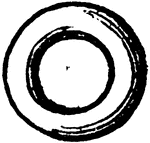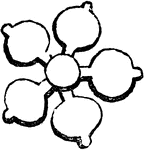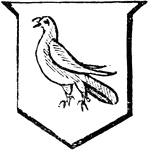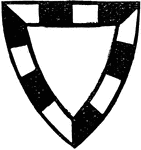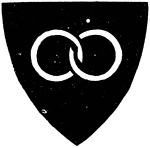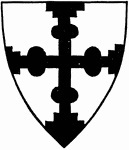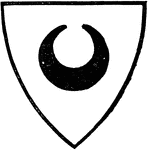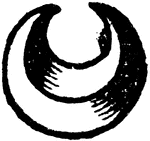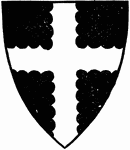
Allerion
"Argent, an allerion gules. ALLERION. An eagle displayed, without beak or feet." -Hall, 1862
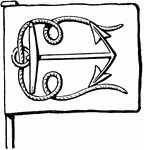
Anchor
"This charge is borne with a cable, and set fesse-wise, by the British Admiralty; but it is usual to…
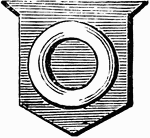
Annulet
"Azure, an annulet argent. Annulets are added to arms for a difference. ANNULET. A small circle borne…
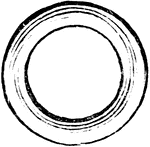
Annulet Difference
"Fifth Son, the ANNULET. The differences used by armorists at the present time are nine in number. They…
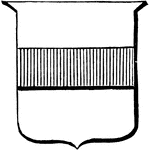
Argent, a Fess Gules
"Argent, a fess gules" describes the red (gules) stripe (fess) on the silver (argent) field.
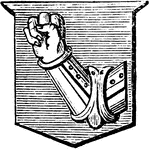
Arm with Fist Clenched
"Azure, a dexter arm vambraced couped, the fist clenched proper. CLENCHED. The fingers pressed towards…
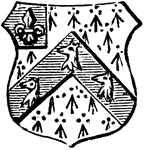
Augmentation
"Ermine, on a chevron azure, three foxes' heads erased, argent. The augmentation is in a canton azure,…

Rose and Crown Badge
"BADGE. A distinctive mark worn by servants, retainers, and followers of royalty or nobility, who, being…
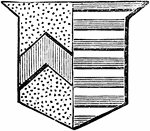
Baron and Femme
"Parted per pale, baron and femme, two coats; first, or, a chevron gules; second, barry of twelve pieces,…
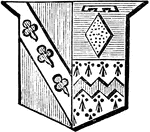
Baron and Femme
"Parted per pale, baron and femme, three coats;—first, gules, on a bend (argent), three trefoils…
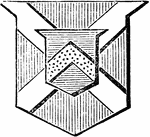
Baron and Femme
"Baron and femme, two coats; first, gules, a saltier argent; second, on an escutcheon of pretence, azure,…
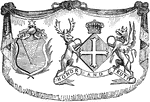
Baron and Femme
"Baron and femme, two atchievements. First, azure, a pile or, crest a star of six points, argent; second,…
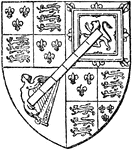
Baton Sinister
"Bar-sinister. BATON-SINISTER, a well-known heraldic indication of illegitimacy. It is a diminutive…
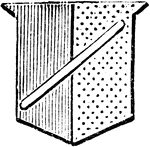
Shield Showing Baton
"The only abatement used in heraldry is the baton: this denotes illegitimacy. It is borne in the escutcheons…
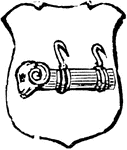
Battering Ram
"Argent, a battering ram proper. BATTERING RAM. An instrument used for battering down walls before gunpowder…
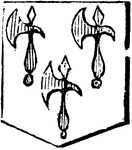
Battle Axe
"Argent, three battle axes gules two over one. BATTLE AXE. An ancient military weapon, frequently borne…
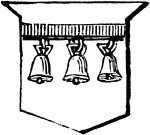
Barrulet Belled
"Argent, a barrulet gules, belled with three bells proper. BELLED. Having bells." -Hall, 1862
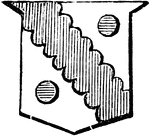
Bend Invected
"Argent, a bend gules, invected between two hurts. INVECTED. A line formed with small semicircles, with…

Bezants Figured
"Gules, three bezants figured. FIGURED. Those bearings which are depicted with a human face, are said…
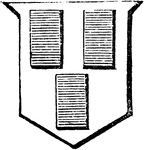
Billets
"Argent, three billets azure, two over one. BILLETS. This charge is, by some authors, supposed to represent…
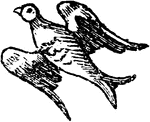
Bird Volant
"VOLANT. The French word for flying. It is used in Heraldry to express the same action." -Hall, 1862

Blue Ridge Pass
"The victory at Blue Ridge Pass, Sunday, September 14th, 1862- infantry charge, and rout of the Confederates.…
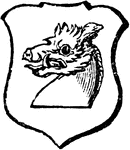
Boar Couped
"Argent, a boar's head proper couped. COUPED. The head or limbs of any animal cut close is called couped."…
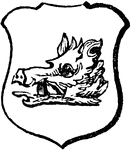
Boar Tusked
"Argent, a boar's head, erased proper, tusked gules. TUSKED. Any animal having tusks of a different…
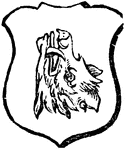
Boar's Head Erect
"Argent, a boar's head erect, and erased. ERECT. This is said of any animal or parts of animals, naturally…

Boit's Experiment
"Boit's experiment which proved tat the charge resides on the surface." -Hawkins, 1917

Boujet
"Argent, a boujet proper. BOUJET. An ancient water bucket, frequently borne in shields of arms." -Hall,…
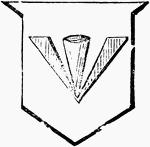
Broad Arrow
"Argent, a broad arrow gules. BROAD ARROW. An ancient weapon of war, thrown by an engine. It is frequently…
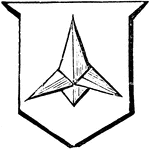
Caltrop
"Argent, a caltrop proper. CALTROP. An iron instrument made to annoy an enemy's cavalry. They were formed…
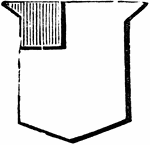
Canton
"CANTON. The French word for corner. It is a small square figure, generally placed at the dexter chief…

Chapeau
"CHAPEAU. Cap of maintenance or dignity, borne only by sovereign princes. It is formed of crimson or…

Chaplet
"Argent, a chaplet proper. CHAPLET. An ancient ornament for the head, granted to gallant knights for…
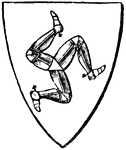
Charge
Human legs are not unfrequently born as charges in Heraldry, sometimes naked, sometimes booted, and…

Final Charge at Gettysburg
The final charge of the Battle of Gettysburg. Both the Confederates and the Union lost thousands of…
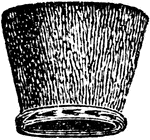
Civic Cap
"CIVIC CAP. A cap of dignity borne by mayors of cities or corporate bodies: it is formed of sables garnished…
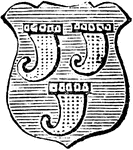
Clarion
"Azure, three clarions or. CLARION. A horn or trumpet borne in this shape in English and German coat-armour."…
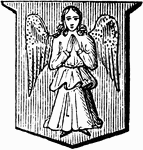
Closegirt
"Gules, an angel erect with wings expanded or, dress closegirt. CLOSEGIRT. A figure whose dress is fastened…

Crescent
"Azure, a crescent argent. CRESCENT. The half moon with its horns turned upwards." -Hall, 1862
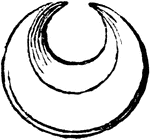
Crescent Difference
"Second Son, the CRESCENT. The differences used by armorists at the present time are nine in number.…

Cross Bottonny
"Cross bottonny. CROSS. An honourable ordinary, more used as a charge in a coat of arms than any of…

Cross Crosslet
"Cross crosslet. CROSS. An honourable ordinary, more used as a charge in a coat of arms than any of…
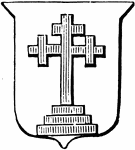
Cross Crosslet on Grieces
"Cross Crosslet on Grieces. GRIECE. In heraldry, a degree or step, as one of the steps upon which crosses…
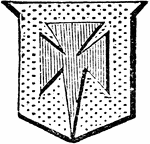
Cross Fitchy
"Cross fitchy. CROSS. An honourable ordinary, more used as a charge in a coat of arms than any of the…
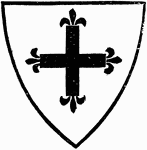
Cross Fleur-De-Lis
A heraldic shield with a charge cross in which the extremities terminate with fleurs-de-lis.
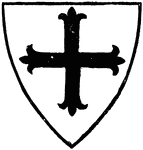
Cross Fleury
"A Cross Fleury, or Fleurie, is borne in the arms of Lord Brougham and Vaux. It is not very unlike the…
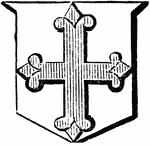
Cross Flory
"Cross flory. CROSS. An honourable ordinary, more used as a charge in a coat of arms than any of the…
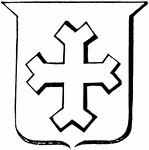
Cross Fourché
"In heraldry, forked; having the extremities divided into two: said of any bearing, especially of a…
